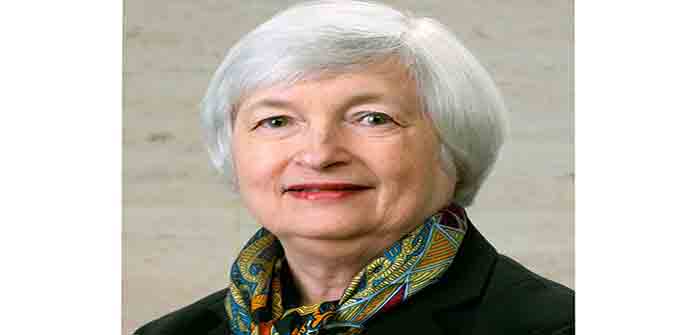
by Pam Martens and Russ Martens at Wall Street on Parade
U.S. Treasury Secretary Janet Yellen has the dual role of Chairing the Financial Stability Oversight Council (F-SOC), whose role is to provide “comprehensive monitoring of the stability of our nation’s financial system.” Heads of each of the federal agencies that supervise Wall Street and the mega banks sit in on meetings of F-SOC.
One would think that such an august body would have a handle on “staggering” threats to the U.S. financial system – especially since F-SOC was created under the 2010 Dodd-Frank financial reform legislation to prevent a replay of the off-balance sheet derivatives that crashed the U.S. economy in 2008 and forced an unprecedented and secret bailout of U.S. and foreign global banks by the Federal Reserve to the tune of $29 trillion. If Yellen is aware of the latest threat to financial stability, she’s not sharing the details with the public. That information came yesterday by way of a stunning report authored by Claudio Borio, Robert McCauley and Patrick McGuire for the Bank for International Settlements (BIS).
The report focuses on the amount of derivative debt that is not being captured through regular statistical reporting because it is held off the balance sheet. These derivatives consist of foreign exchange swaps, forwards and currency swaps. The authors call this exposure “staggering” but focus primarily on the potential for upsets to dollar swap lines to settle it as it comes due. A greater concern, in our estimation, is this line from the report: “For banks headquartered outside the United States, dollar debt from these instruments is estimated at $39 trillion, more than double their on-balance sheet dollar debt and more than 10 times their capital.” Their on-balance sheet dollar debt is $15 trillion.
This is reminiscent of Goldman Sachs engaging in derivative trades with Greece to hide its mountain of debt prior to it blowing up.
Global foreign banks are – for better or worse – an integral part of the U.S. financial system. When there is a crisis, such as the Wall Street implosion in 2008 or the pandemic in 2020, the Federal Reserve bails out global foreign banks along with global domestic banks. Why does it do that? Because the trading units of foreign global banks, as well as domestic global banks, make up what the Fed calls its “primary dealers.” The primary dealers are contractually obligated to make purchases of U.S. Treasury securities at each U.S. Treasury auction and to trade with the New York Fed to carry out Federal Reserve monetary policy.
Since the financial crisis of 2008…
Continue Reading